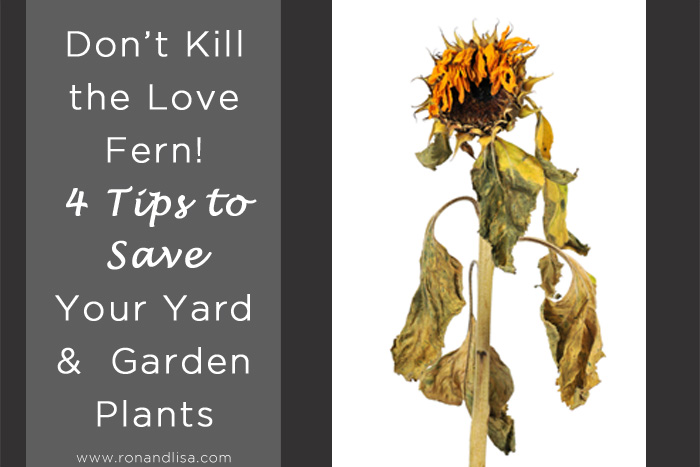Here’s a question: Do you end up killing most of what you grow in your garden each year? This has happened to me and I’m confident there are several of you who can relate. Life gets busy and – just when you believe you have it all under control – you realize your tomatoes and cucumbers haven’t been watered in three days and the post-heave wave, scattered showers have narrowly missed your yard.
It is time to reassess priorities. If it is a garden you want – then a garden you shall have – but, with one caveat. You’ll need a garden that fits your lifestyle; one that can grow and receive love from afar while requiring little direct maintenance.
Remember the movie How to Lose a Guy in 10 Days? We don’t want to upset Kate Hudson’s character with any dead love ferns now do we? Here are a (4) suggestions for easy to cultivate (aka, hard to kill) plants for your yard and garden.
1.) Herbs
The first option is herbs of any kind, however rosemary, thyme, basil, and mint, are some of my top choices. Herbs have a wealth of uses for healing the body both internally and externally. Plus, if you enjoy cooking, then you’ll take great pride in knowing you picked these herbs yourself.
Many varieties can suddenly take off and grow wild in the garden. So, if you prefer low maintenance (but prefer not to worry about, say, mint everywhere), keep the herbs in containers. Furthermore, if you live in a warm weather region such as California where pests and other insects are a seasonal issue, try using your herbs as a natural repellant. Hiring an exterminator should only be left as a last resort unless the substances they use are derived from natural ingredients.
2.) Horseradish
To some, a little horseradish goes a long way. Horseradish lends special flavor to meat or fish and is a robust perennial which needs little water or other care since it is a member of the cabbage family and can pretty much survive on its own (hmm, would have been a far better choice for Matthew McConaughey’s character).
Still, like many herbs, horseradish will also sprawl out of control when placed directly in the ground. For this reason keep it in a container on the patio. For best results, the container should be deep enough for roots to grow freely.
3.) Tatume squash
While there are many types of squash, not all do as well as tatume; particularly because of it’s immunity to insects that generally feed on the squash family. It’s a robust variety which likes to spread as far as it can go, hence you can either turn this into an interesting yard spectacle or keep it fenced in. Either way, the sight of its large leaves and bright yellow flowers will leave the low-maintenance gardener feeling enormous pride in achieving success with little effort.
Related Articles:
An Introduction to Xeriscaping: 7 Simple Principles
Green Thumb: 5 Reasons to Create a Vertical Garden
Seaweed: Great for Gardens, Not Just Sushi
Living Walls: Planting Seeds from a New Perspective
Save Money with 5 Eco-Friendly Landscape Tips for Your Home
How to Root Basil in Water and Bring Bees to Your Garden
7 MYTHS of Having & Maintaining a Green Lawn
How to Grow Your Own Culinary Herbs Inside or Out!
4.) Dry beans
There are several types of dry beans. If you are looking for low maintenance plants that provide some kind of sustenance, these falls into such a category. As with most plants that produce ‘fruit,’ beans require a little extra nutrition + water when the legume is developing. Other than that, a couple of minutes once a week are all it takes to maintain any unwanted weeds which may have popped up.
At the end of the day, you’ll be amazed at your harvest. Plus, you can free up more time for romantic comedies and other very important things, while simultaneously growing ingredients for a future meal.
Guest blogger, Jakob Barry is a green living journalist for Networx.com. Networx.com helps homeowners save time, money and frustration by connecting them with home improvement professionals. From plumbers and roofers to fencing contractors, Networx simplifies the process of locating a reliable professional.




Gardening means different things to different people. Thousands view gardening as a hobby, a relaxing escape from the pressures of an urban environment. For these people, the food produced may be almost secondary. Growing fresh vegetables, herbs, or fruits provides a great sense of joy and accomplishment. A vegetable garden can also reduce the family’s food budget, and it can be a source of hard-to-find vegetables such as kohlrabi, Chinese cabbage, horseradish, salsify, and pak choi. One of the main reasons that people garden is that vegetables from the supermarket cannot compare in taste, quality, or freshness with vegetables grown in the home garden.